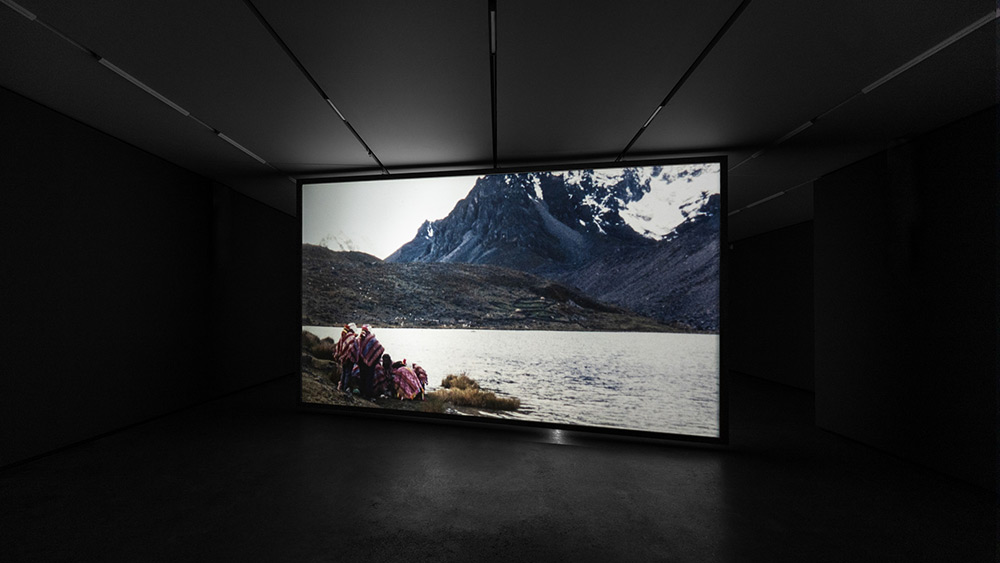Every year, tens of thousands of pilgrims flock to the Sinakara Valley atop the Peruvian Andes to celebrate the Qoyllur Rit’i (Snow Star) festival. Along with dancing and prayer, a big part of the festival used to involve the cutting of large blocks of ice, whose melted water is thought to hold healing powers. Warming temperatures have put an end to the ritual.
In Rosa Barba’s 35mm film installation, Aggregate States of Matters (2019), intimate depictions of the Andean livelihoods and daily rituals impacted by the effects of a warming planet contrast with grainy aerial shots of snow-capped mountain peaks and Alpine lagoons—macroscopic views that flatten detail and present the warming earth not as lived habitat, but as image. Barba’s mesmerizing portrayal of the melting of glaciers in the Andes is not filmed like a documentary, nor is it a wistful portrait of a rapidly disappearing landscape, but it does use elements of both to reflect on film’s fundamental inadequacy to represent an event as complex as the climate crisis.
Barba shot the film in close collaboration with members of Indigenous Quechua communities, whose testimonials often reflect ambivalent attitudes toward their changing surroundings. While the melting of the ice brings a temporary gold rush of plentiful water for farming, it has wrought huge changes to their spiritual and cultural lives through the exhaustion of natural resources, changes to the local ecosystem, and the waning of traditions. The film avoids talking-head interviews and voice-overs to instead present their stories as text-blocks that build up and move across the flickering images on-screen, preventing a linear reading as the stories inhabit and meld with the landscape.
The defining characteristic of Barba’s work is its dual investment in film as an immaterial medium that transmits information—through time, space, light, and sound—and as a physical material with sculptural properties—celluloid strip, projector, and resulting image. In Aggregate States of Matters, the mechanics of the filmic apparatus are put on display as a crucial element of the encounter between nature and technology shown on-screen. The huge 35mm projector that forms part of the installation is almost as commanding as the imposing shots it produces of landscapes eroded in the name of progress. These images’ visible film grain and occasional light streaks suggest a parallel between the obsolescence of celluloid film and the disappearance of the glaciers. Barba makes explicit the materiality of film to prompt the viewer to consider how knowledge and landscapes are framed, mediated, and, ultimately, constructed through cinematic means.
Aggregate States of Matters presents us with two sides of the sublime: the dwarfing, raw power of nature, and the outsize human effect on environmental devastation. Both, fabricated by technological representation, are capable of inspiring terror, awe, and fascination. And both, Barba reveals, fall short of capturing the lived experience of a disintegrating world.
Aggregate States of Matters is on view through Spring 2025 at the Museum of Modern Art.



